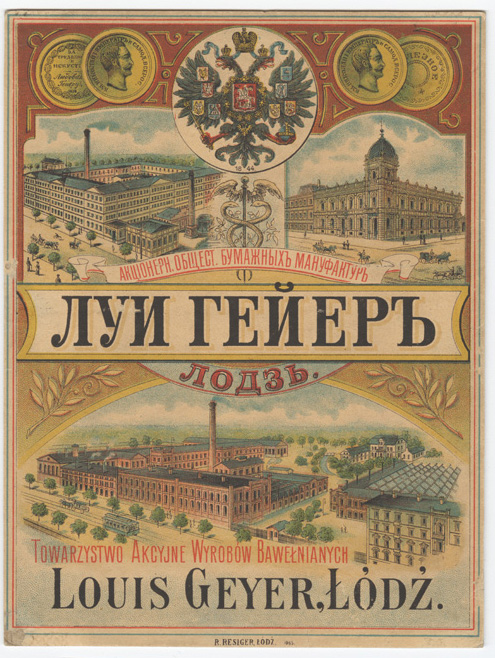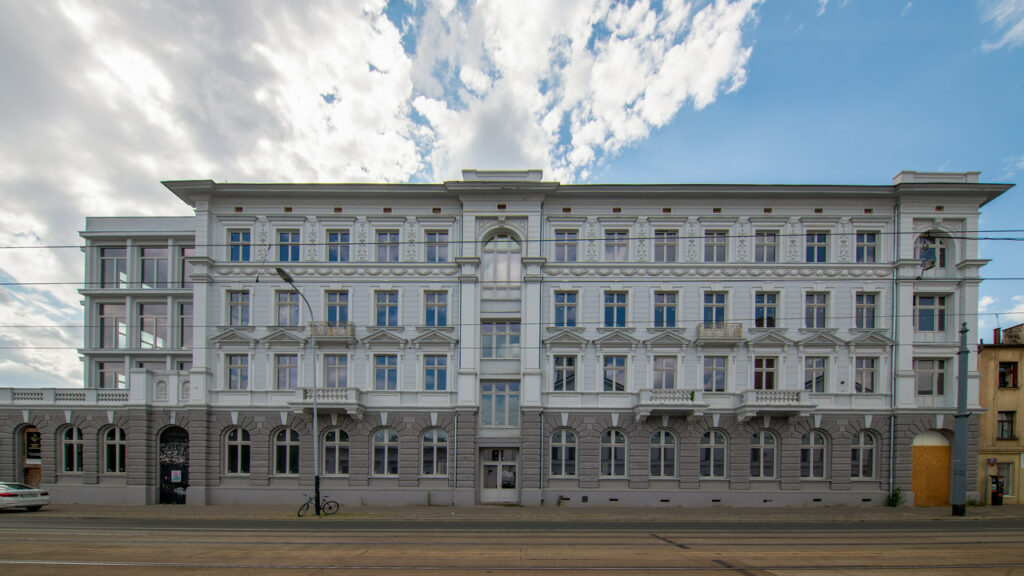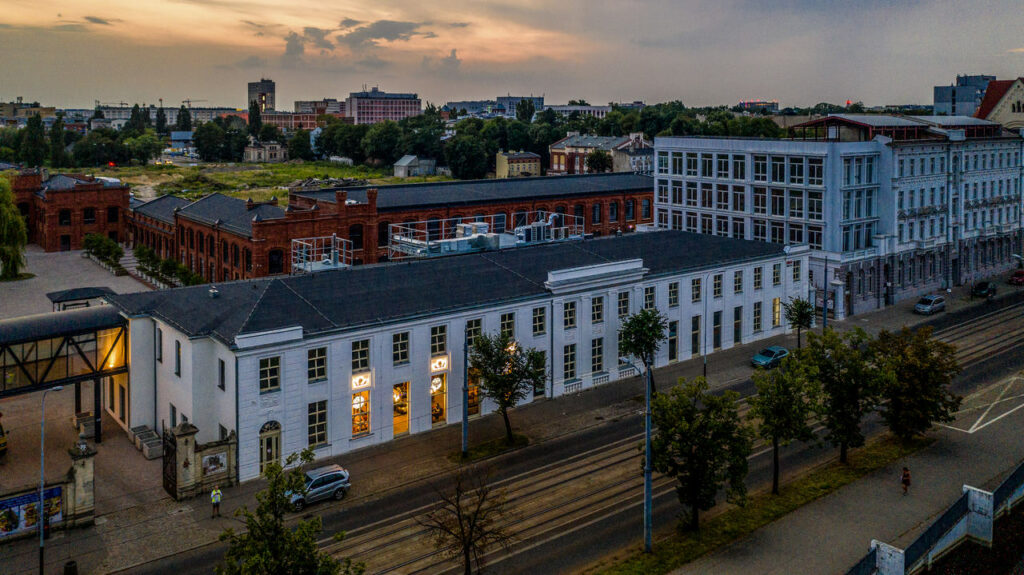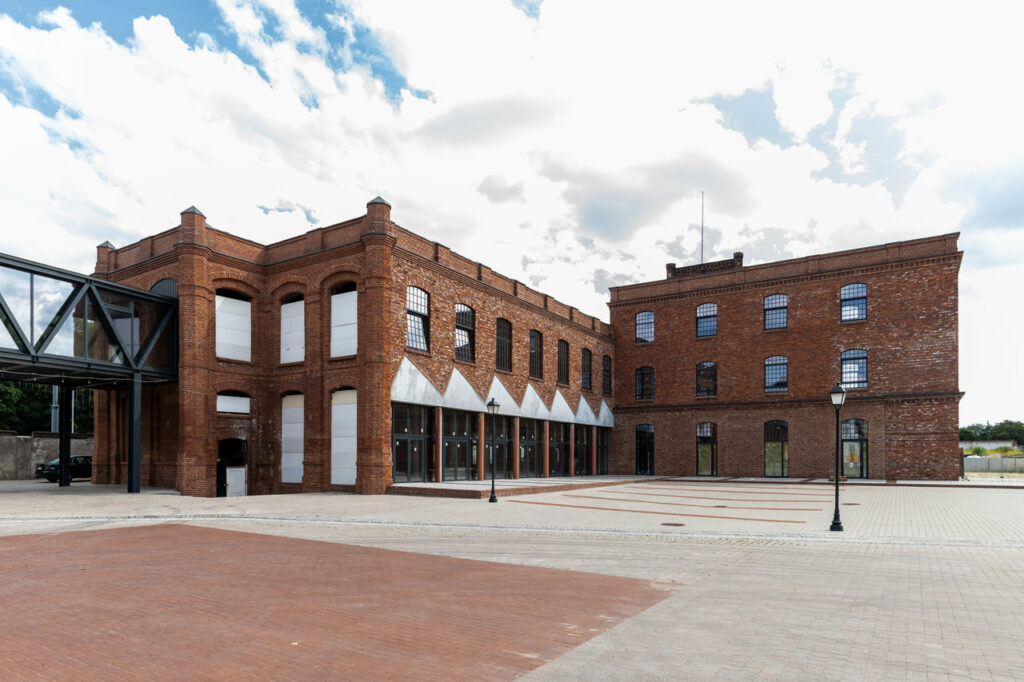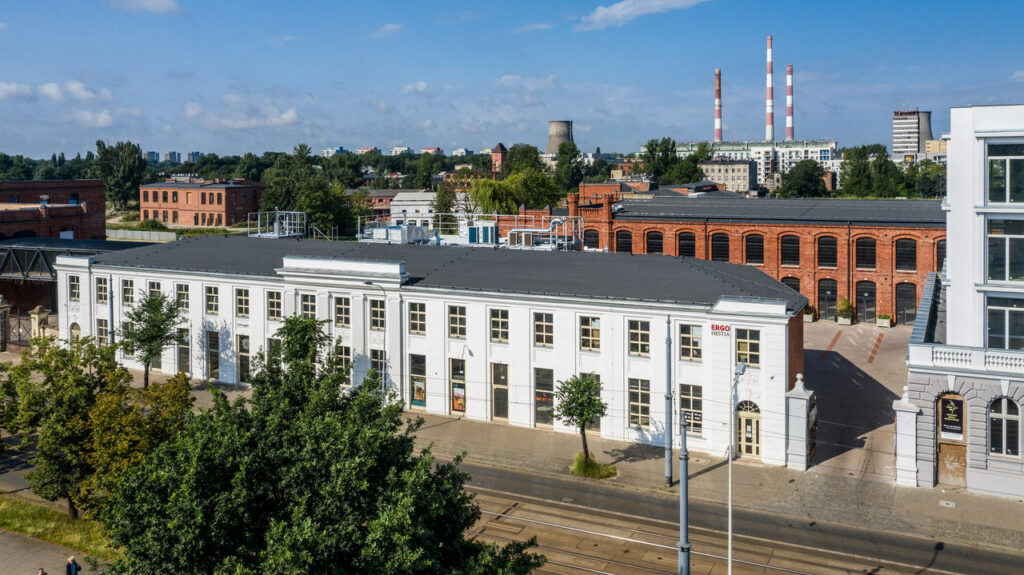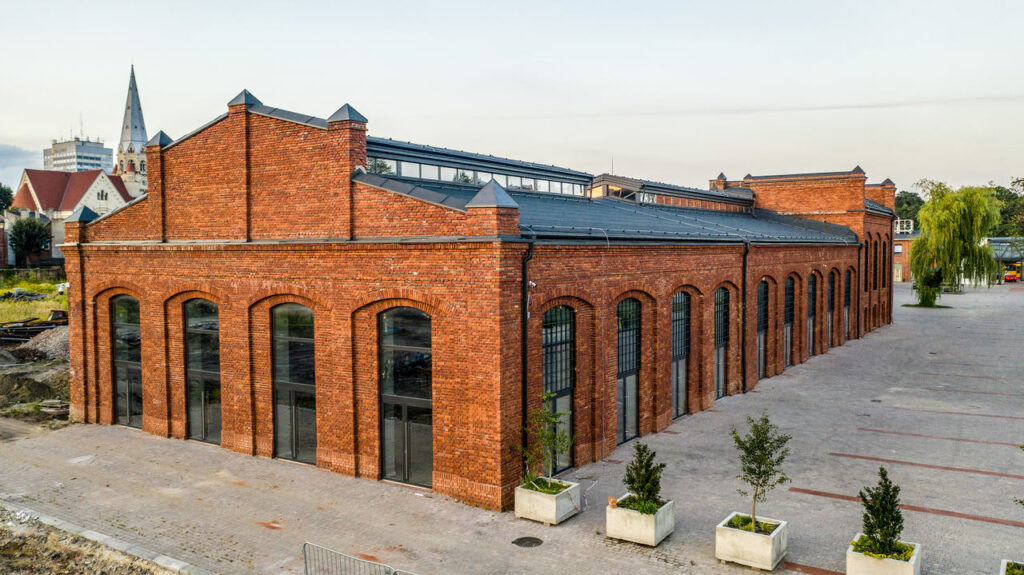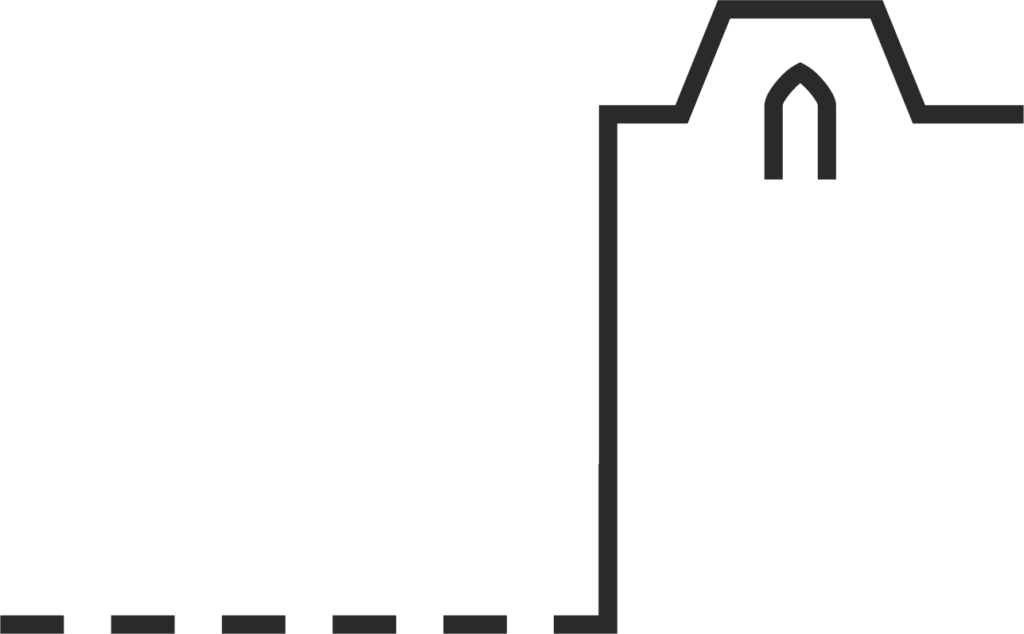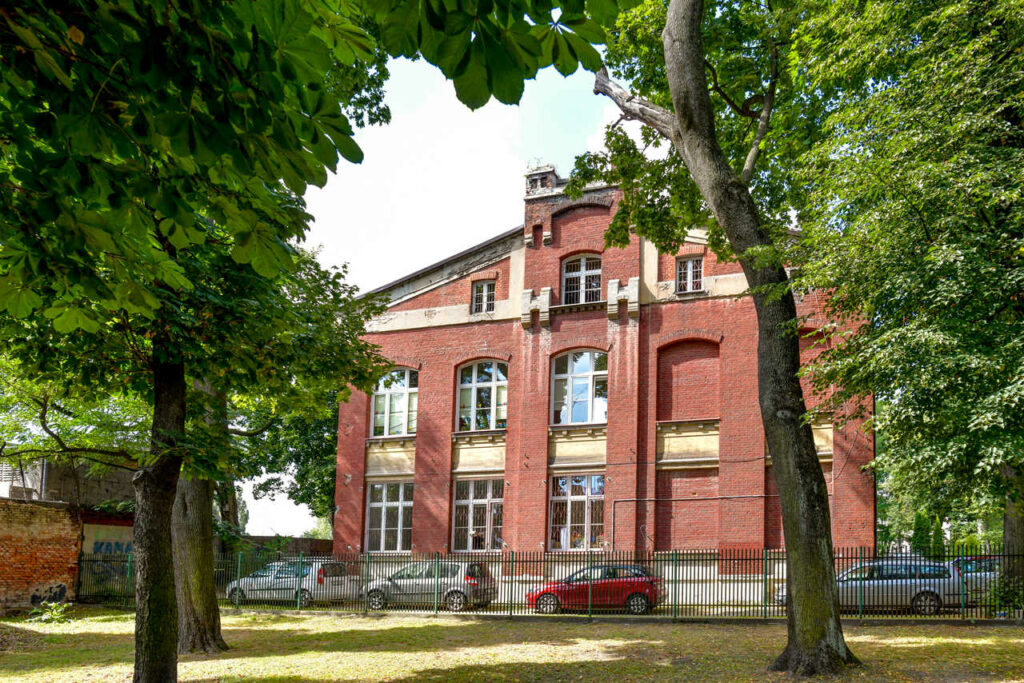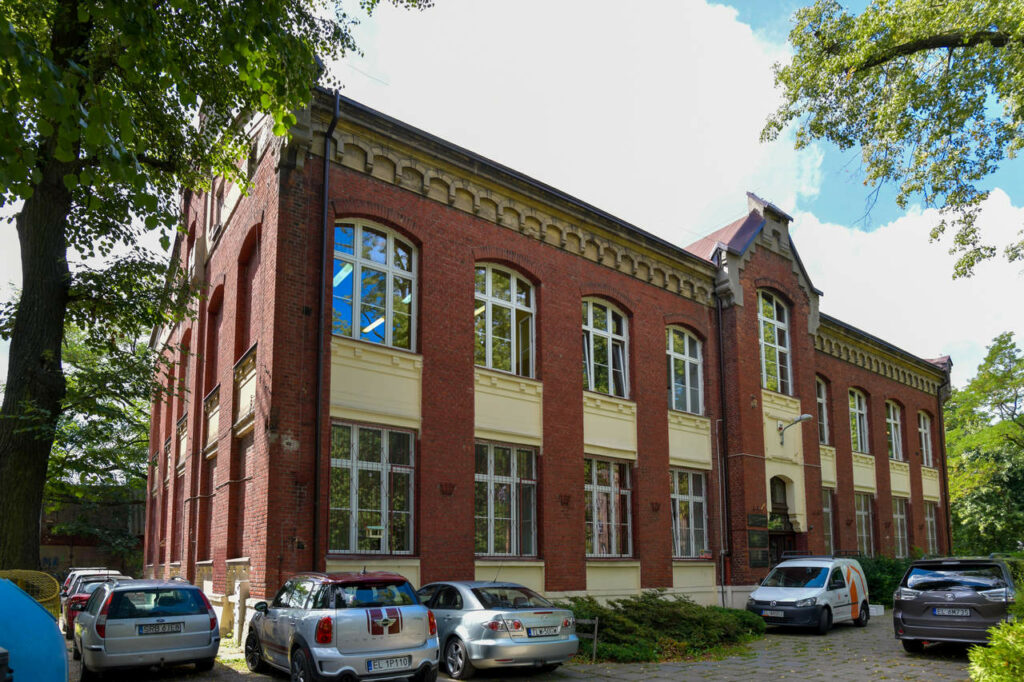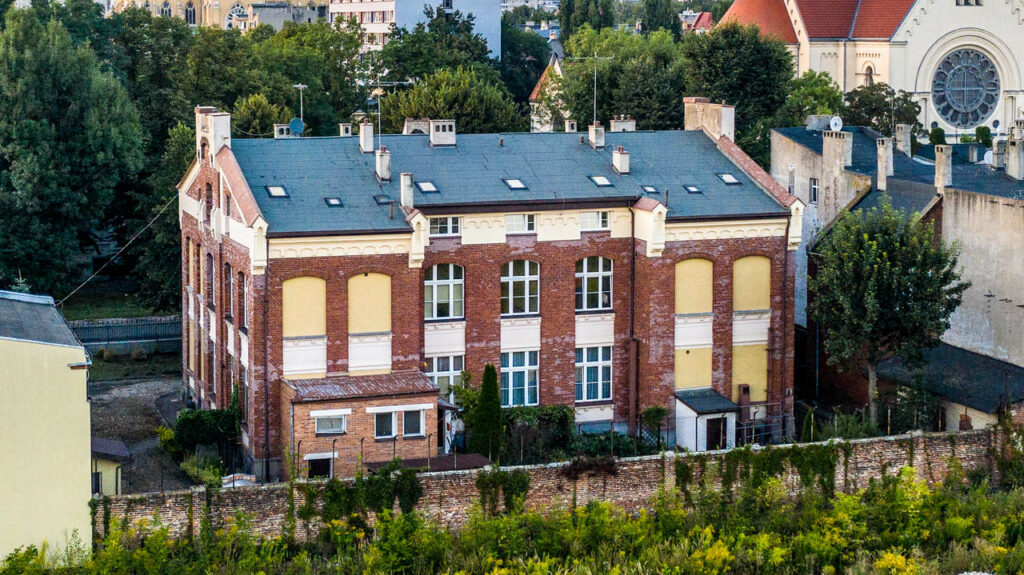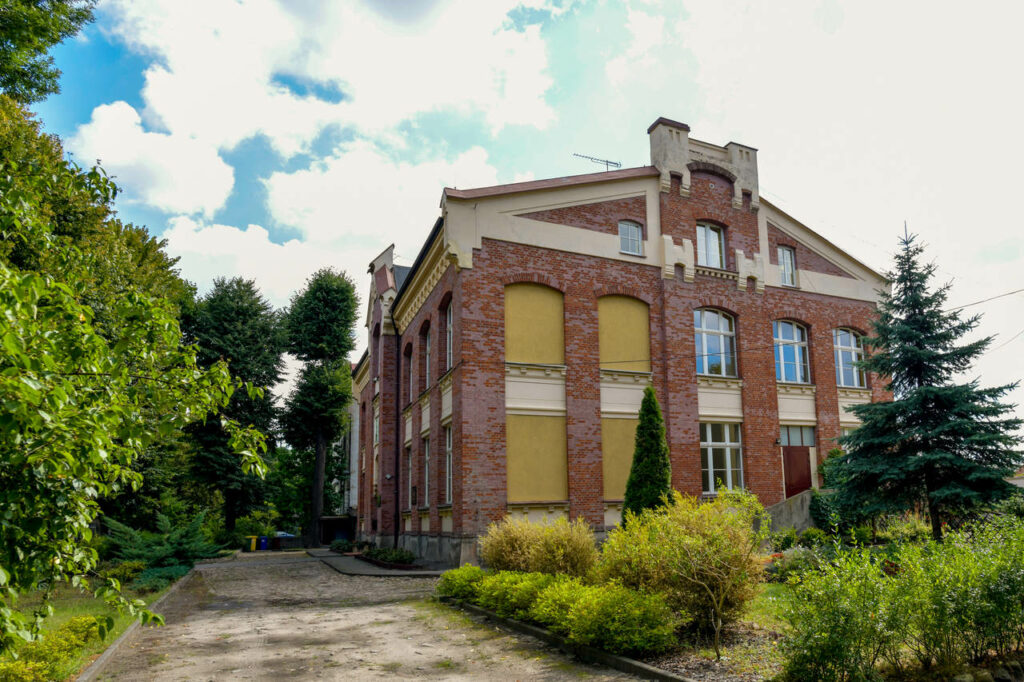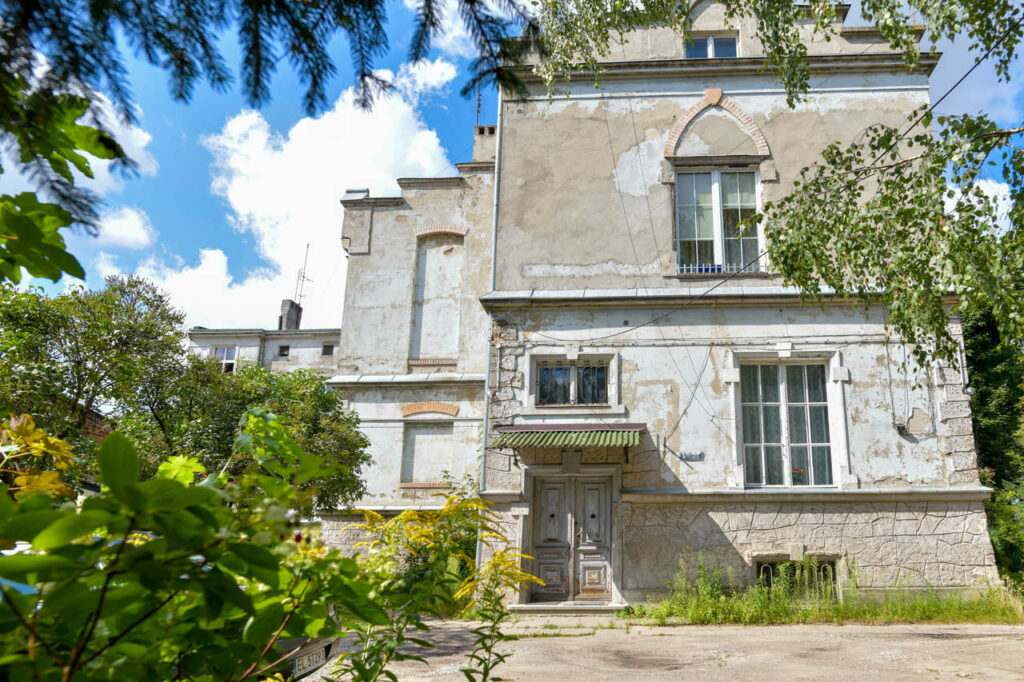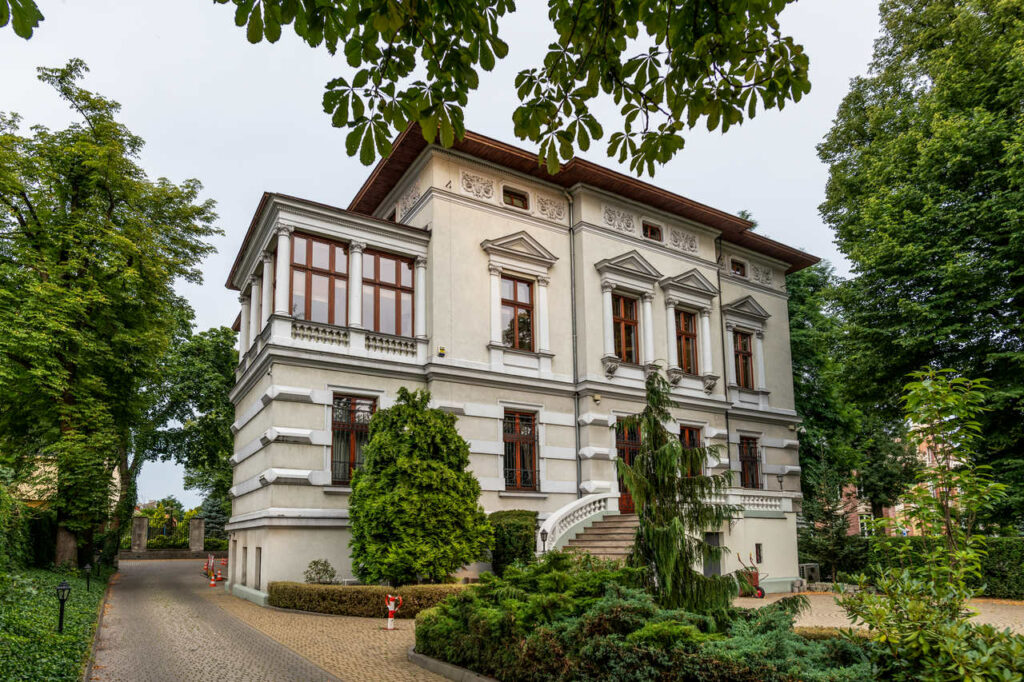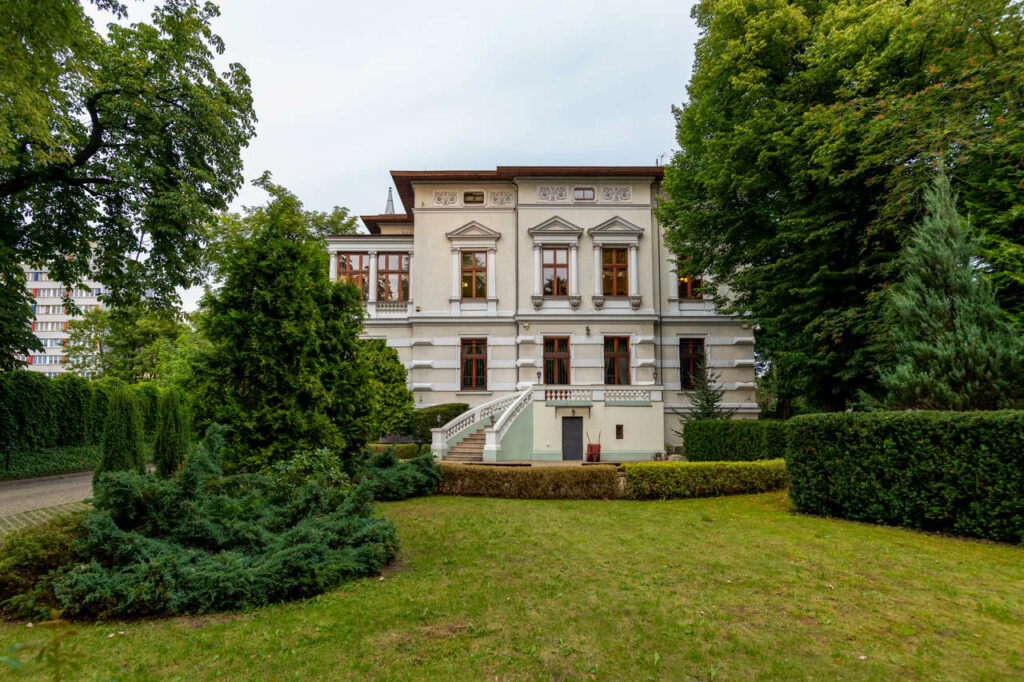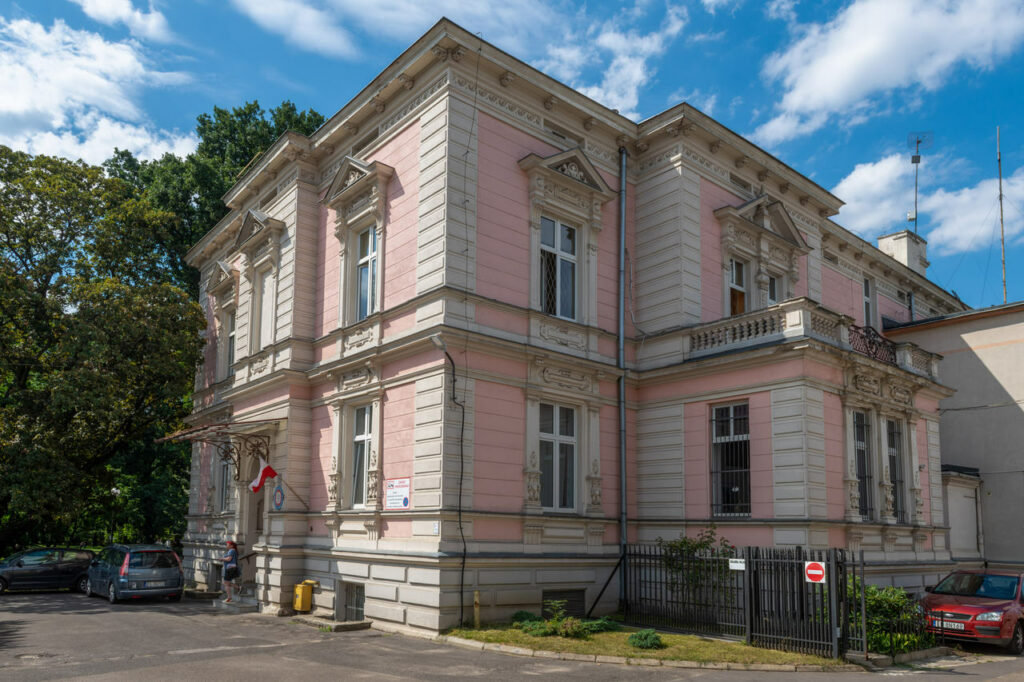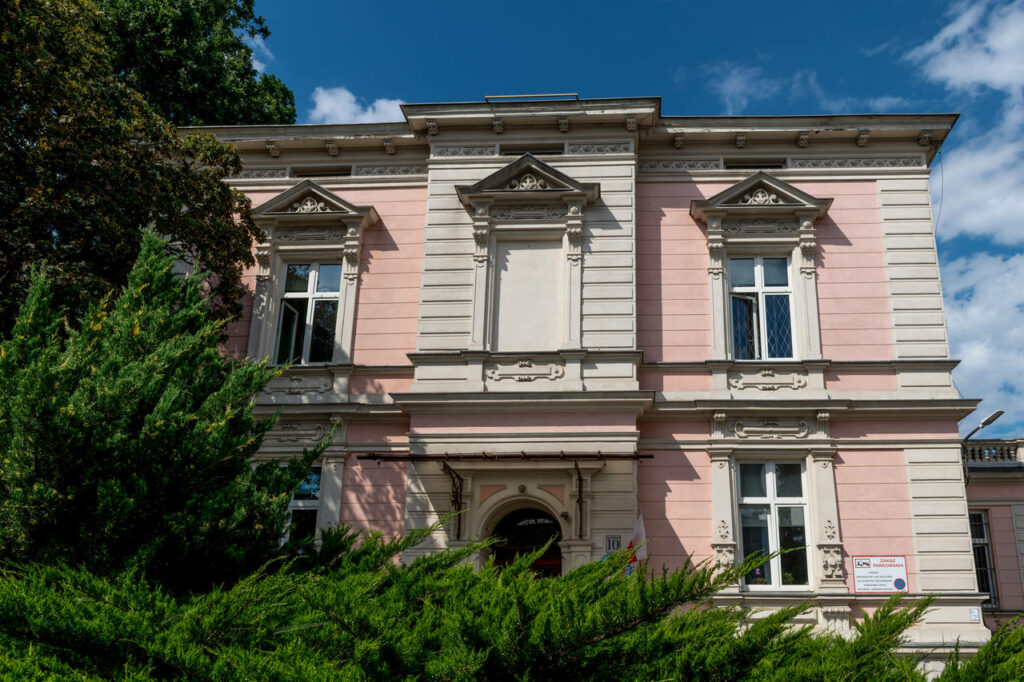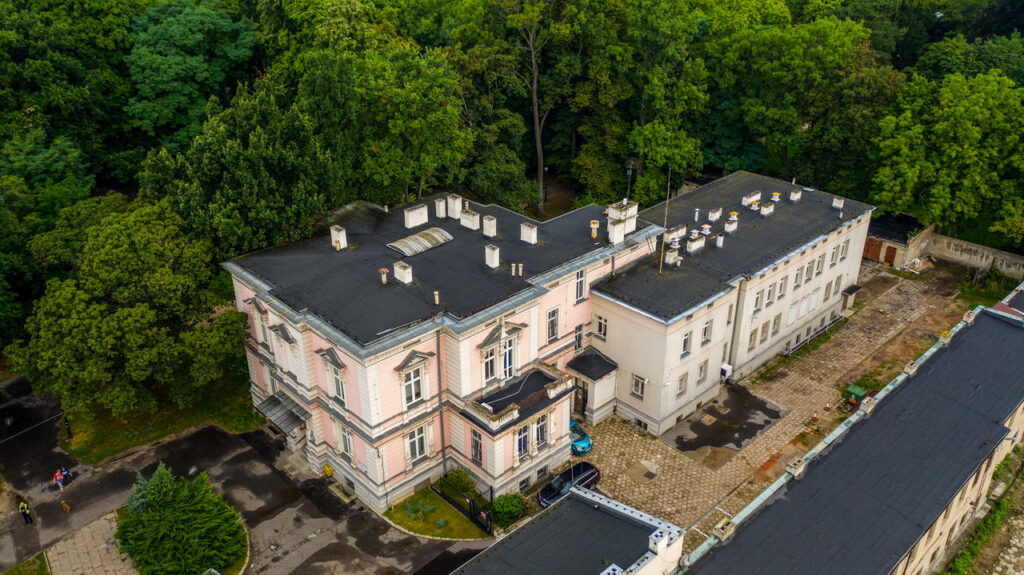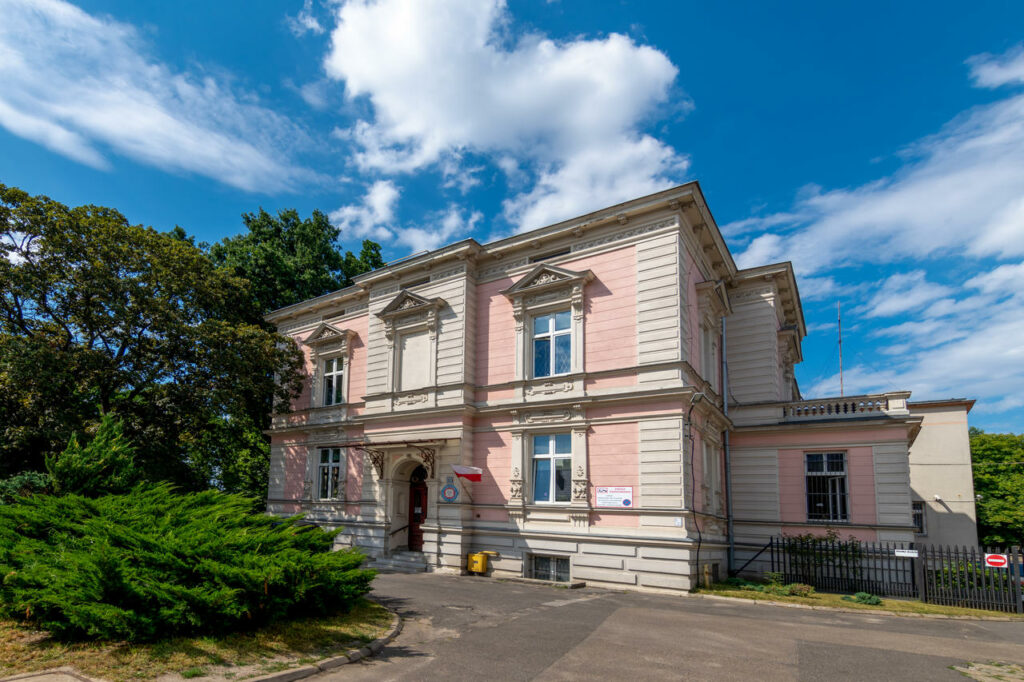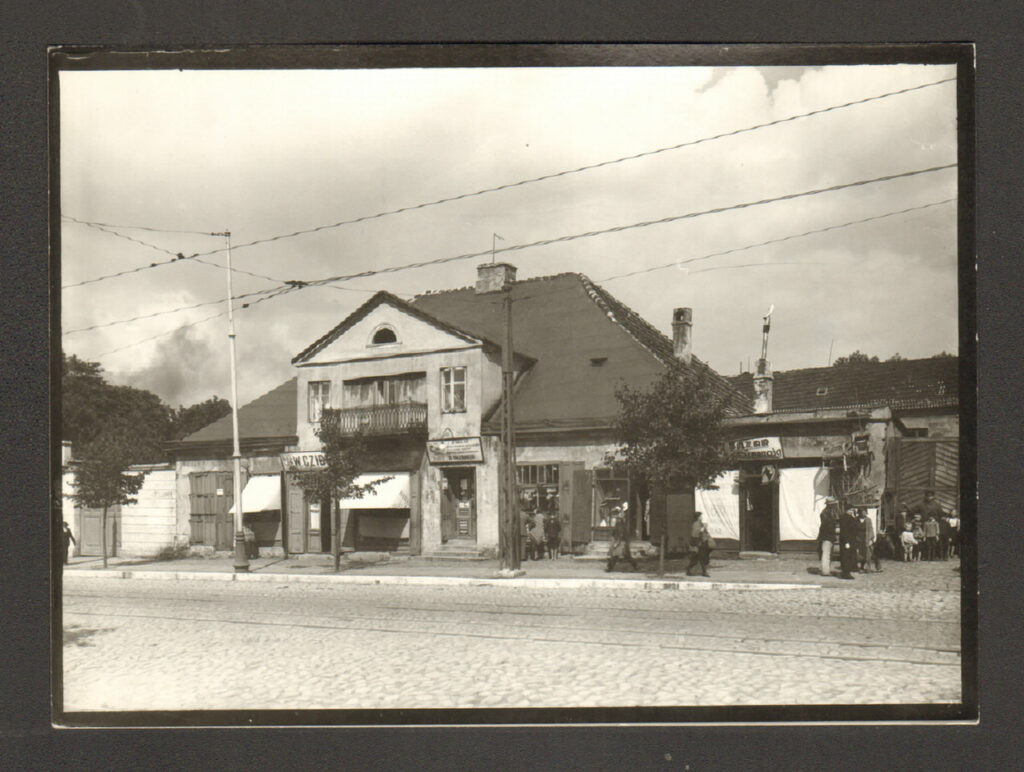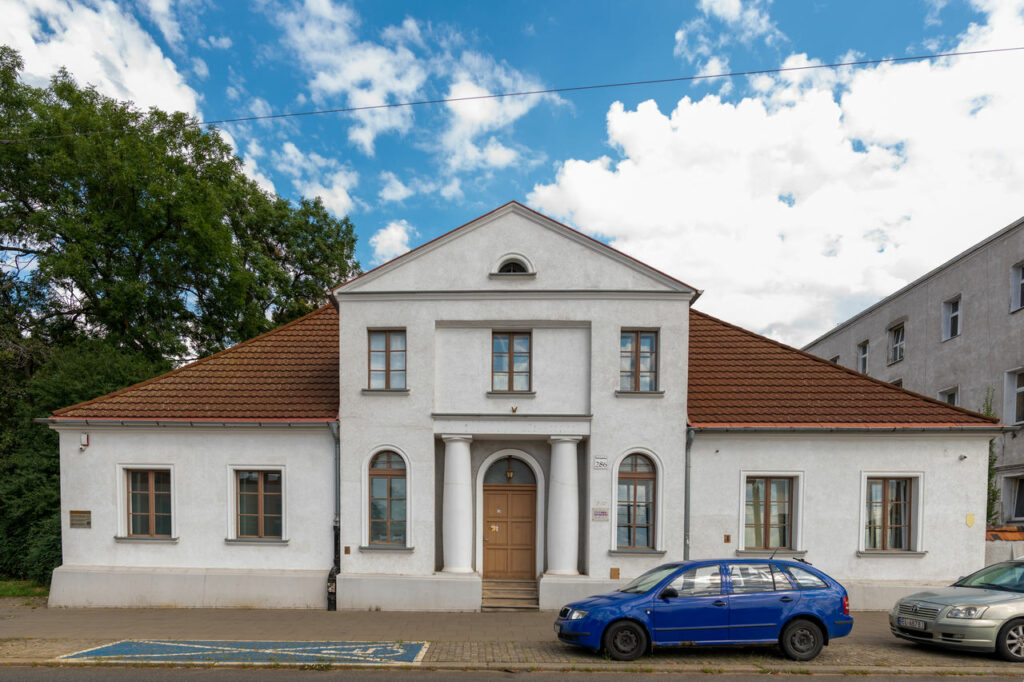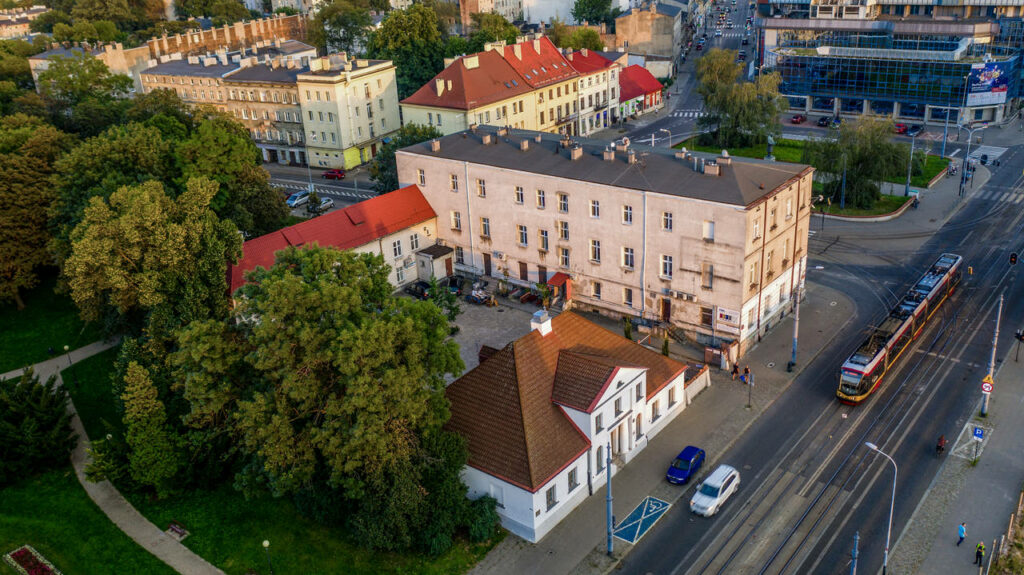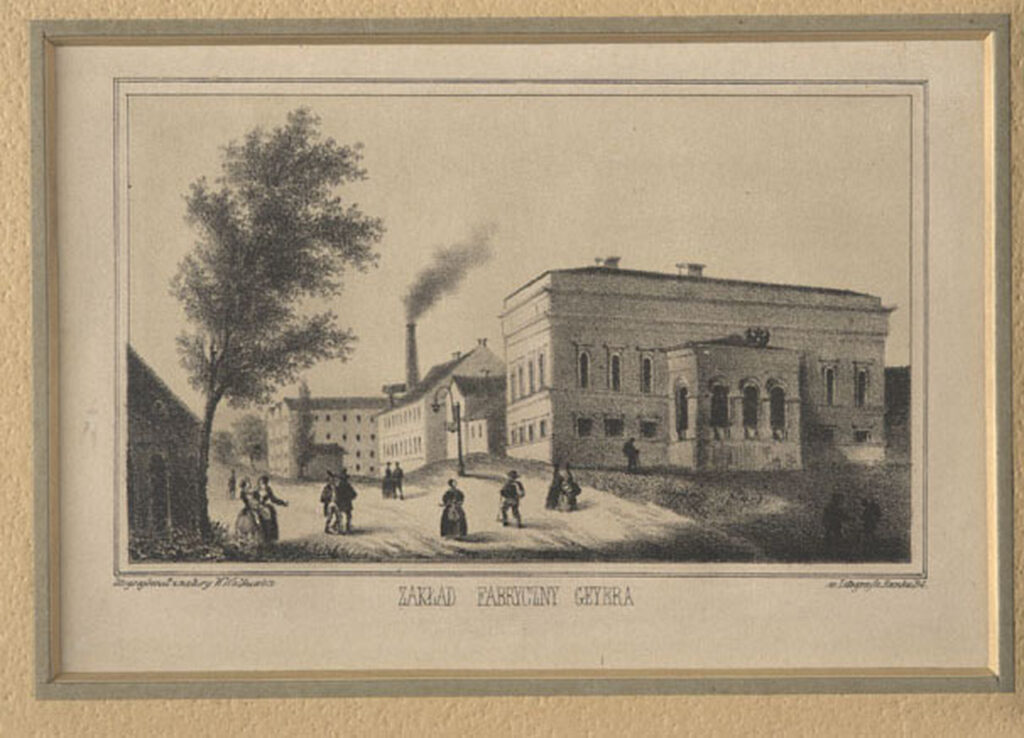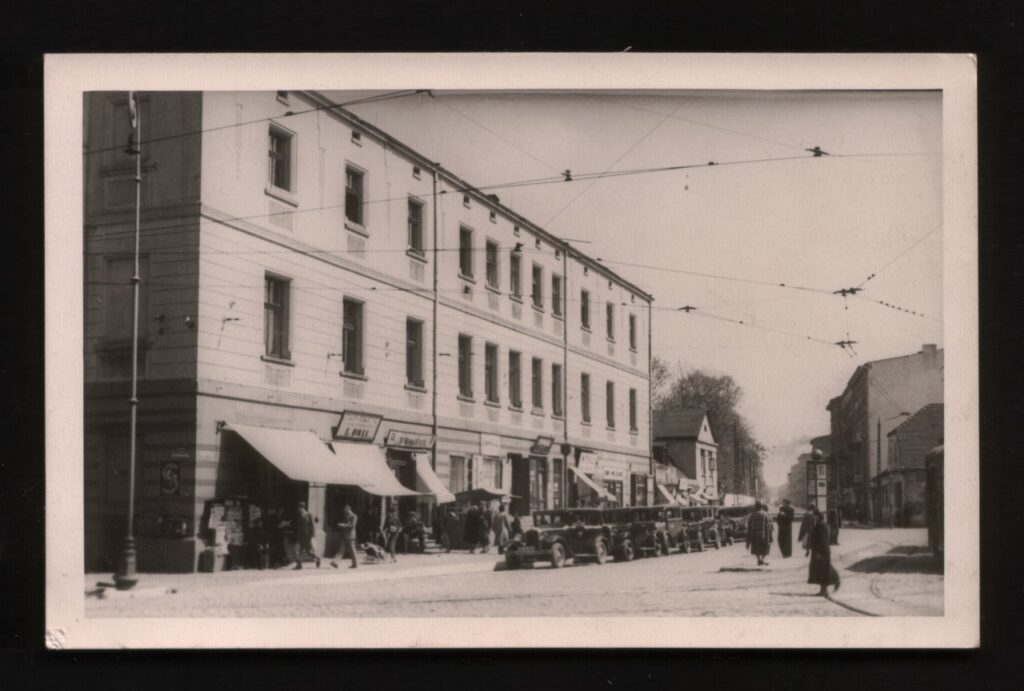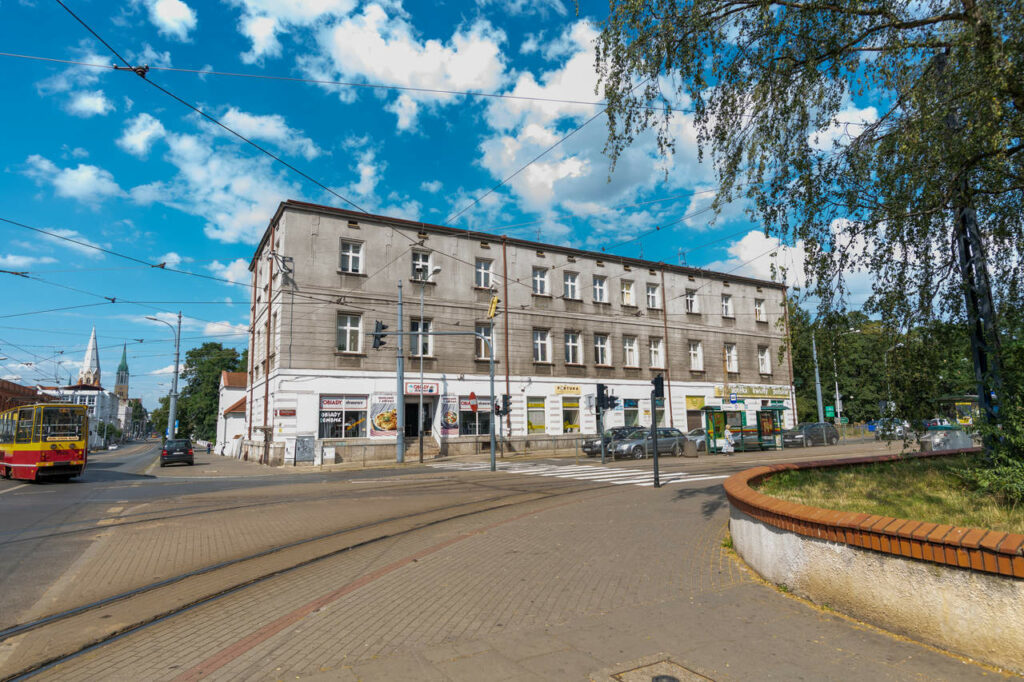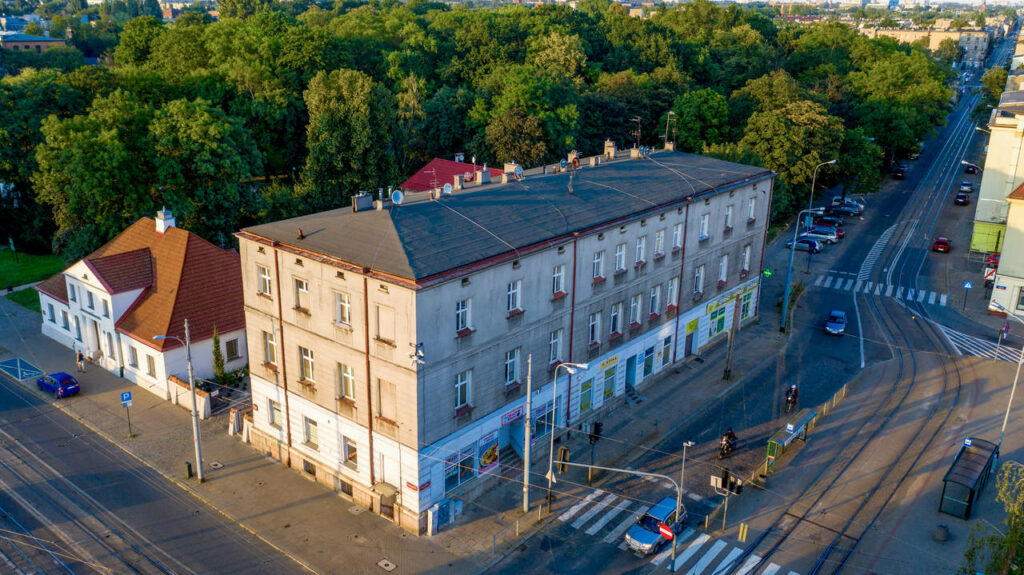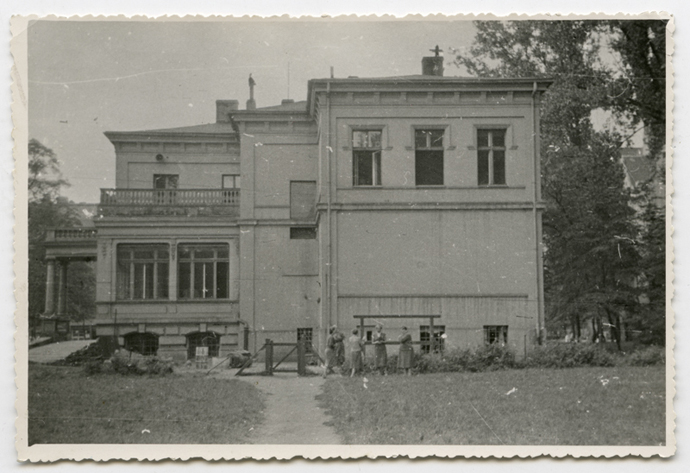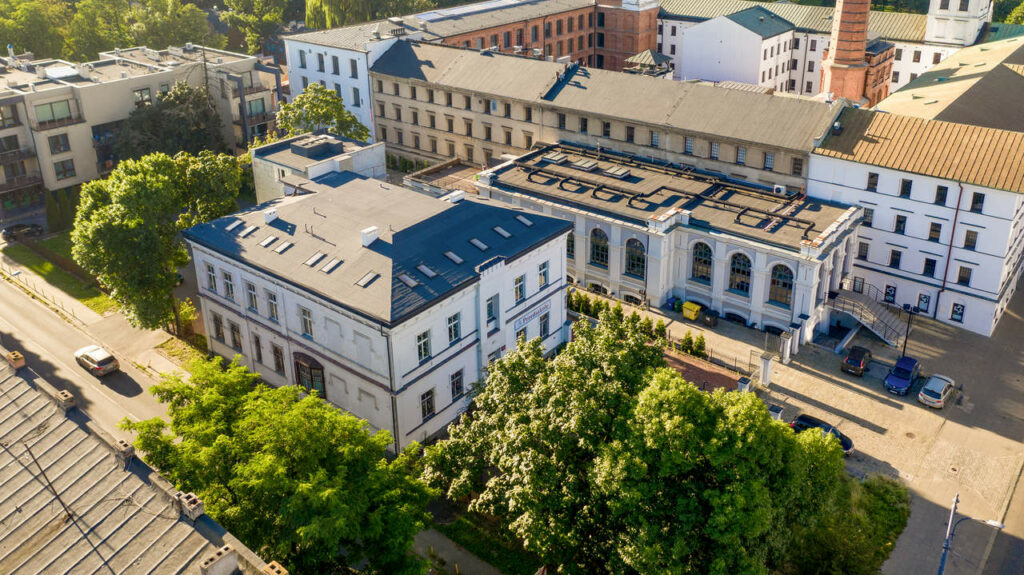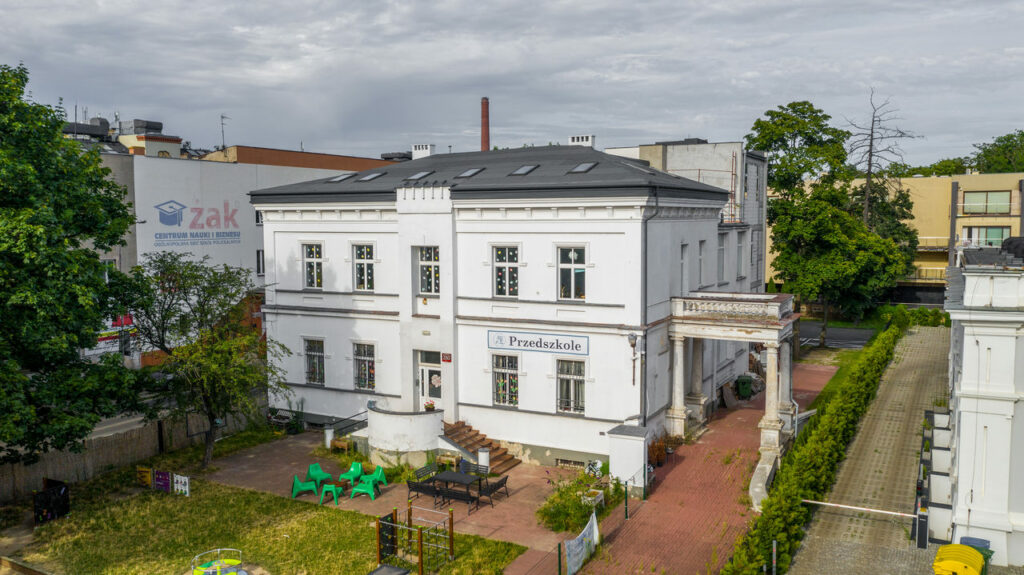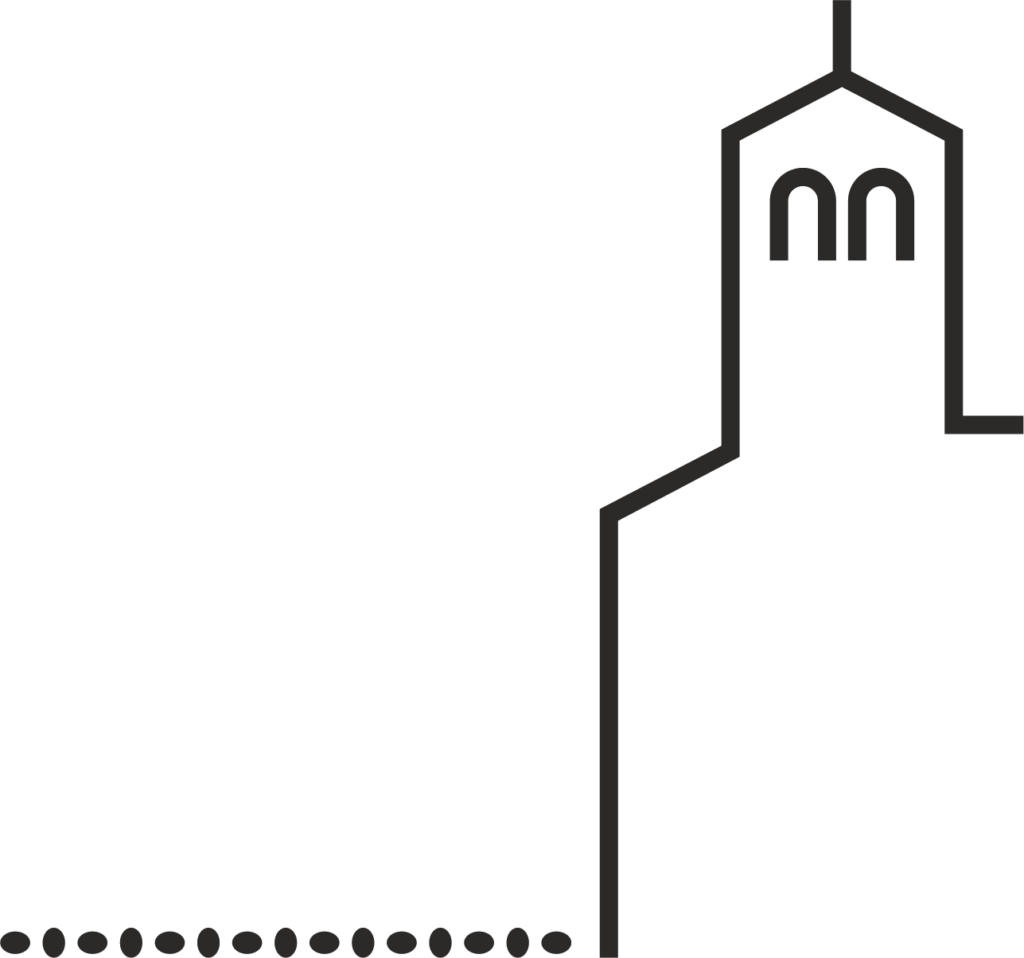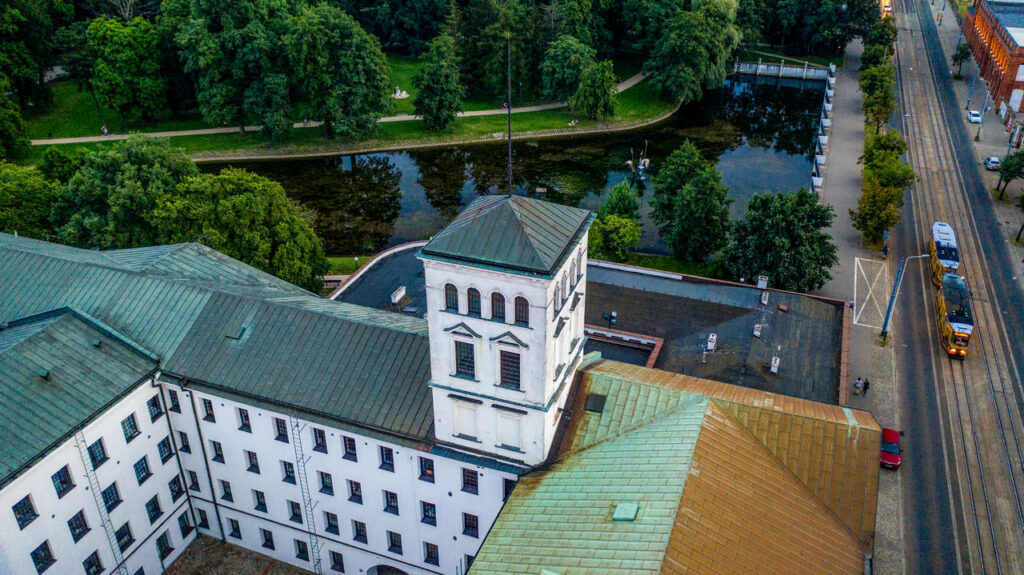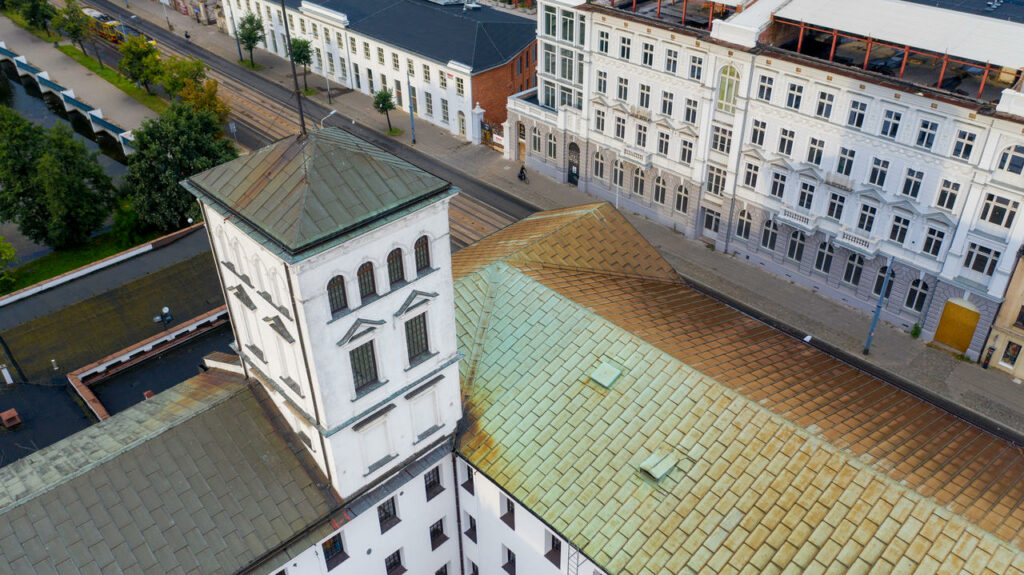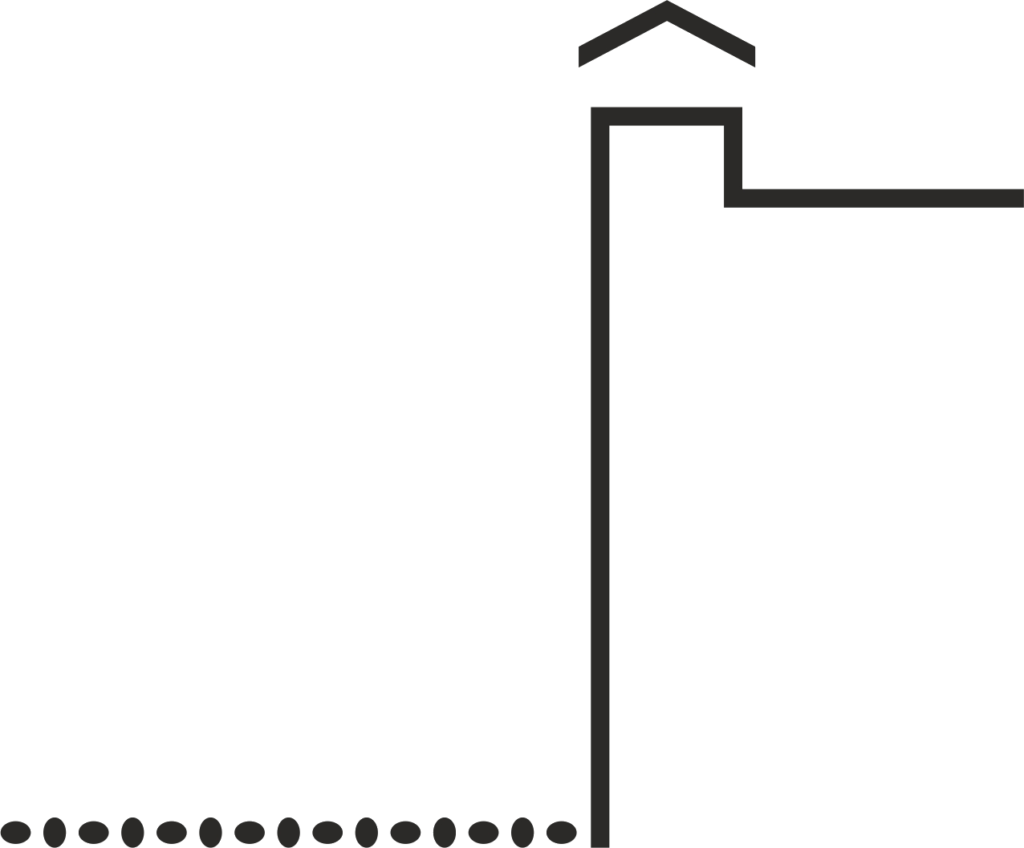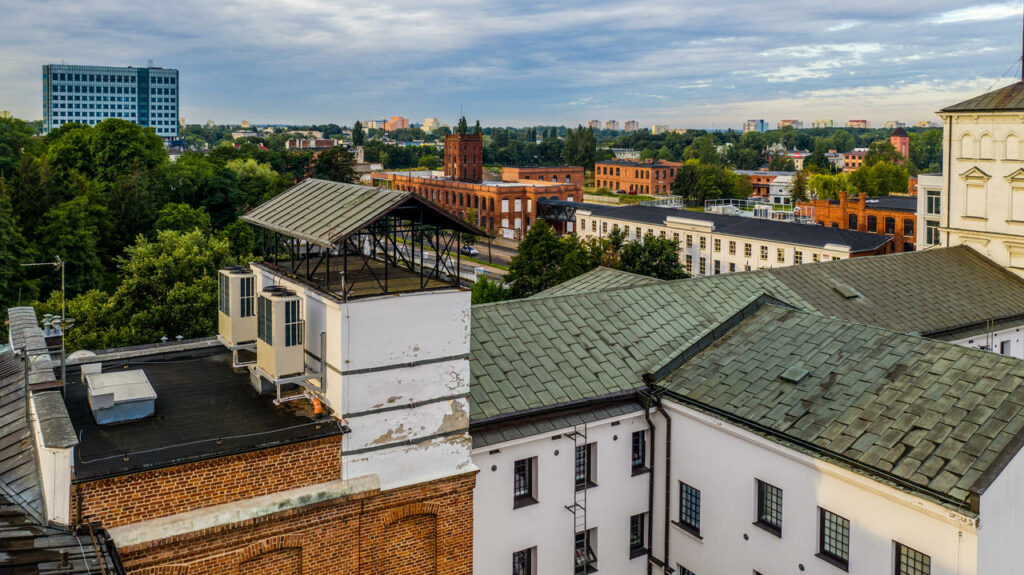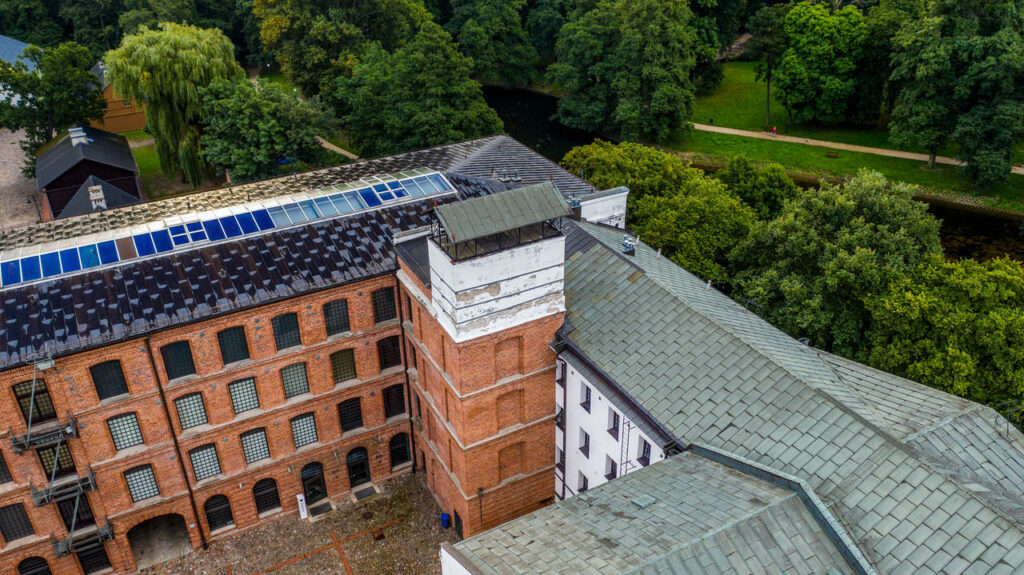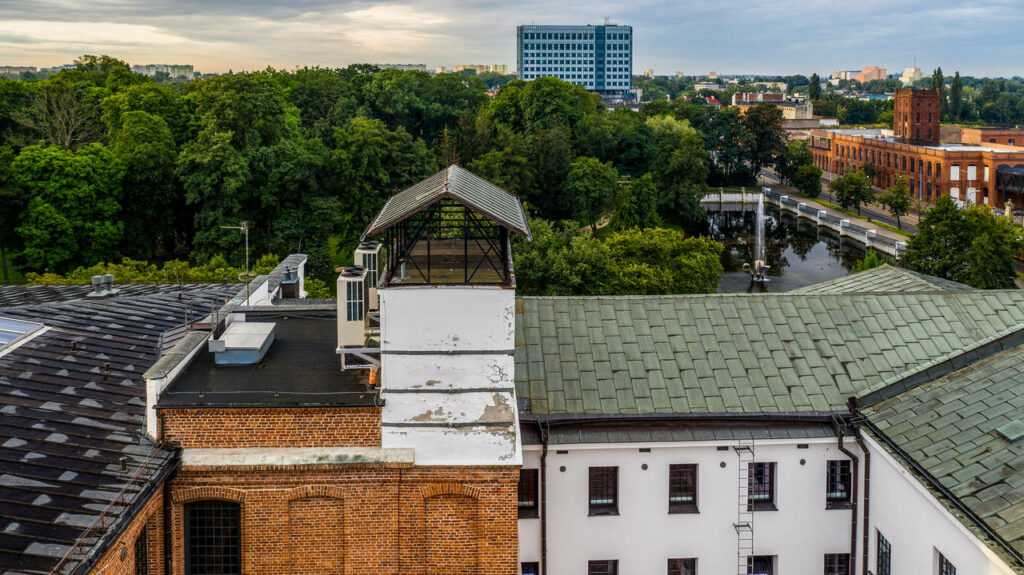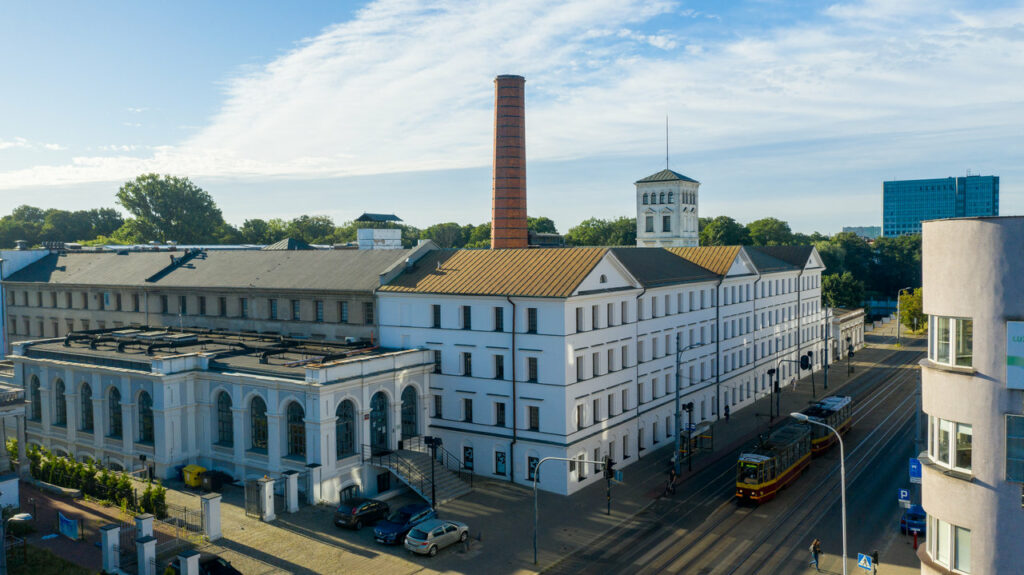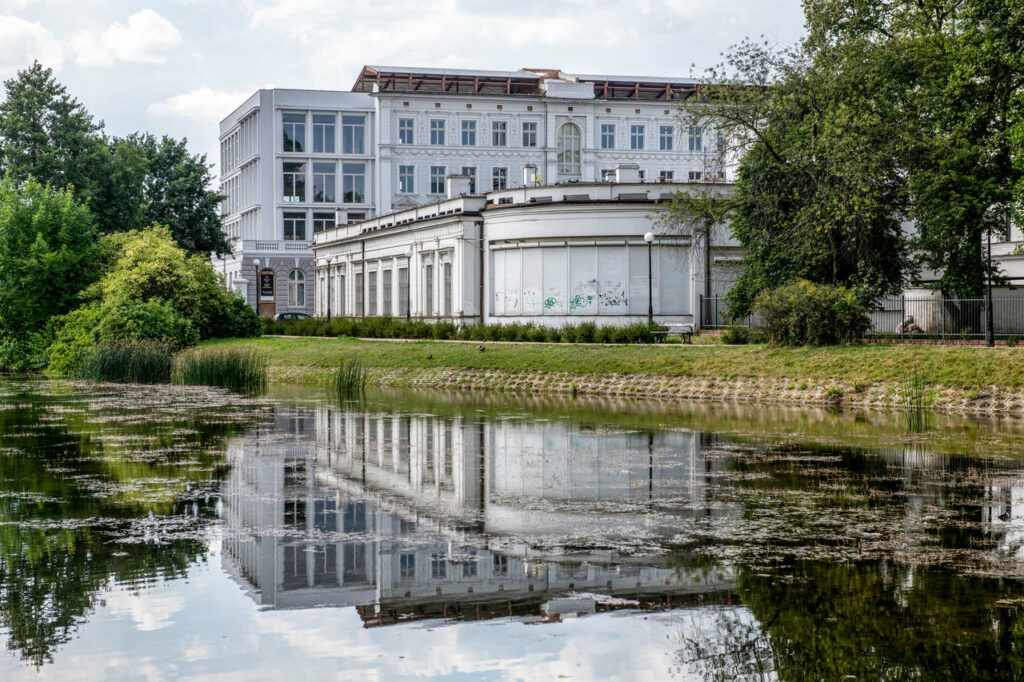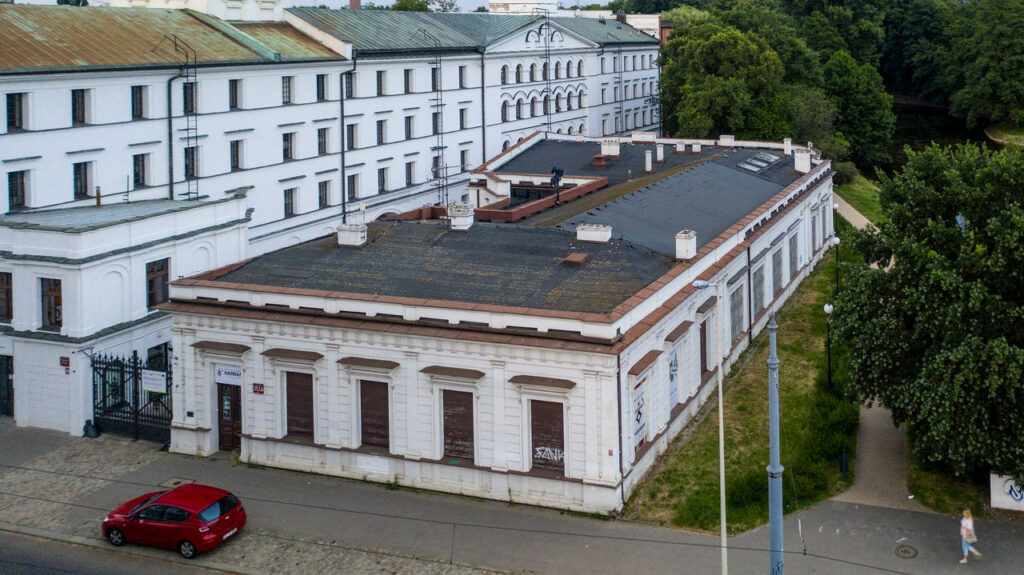New Factory
Piotrkowska 293–305


Before 1850, Ludwik Geyer purchased land on the western side of Piotrkowska street stretching between Czerwona street and Piotrkowska 315. As the company grew, new buildings with unplastered brick walls were built there. The area was commonly known as the Red Factory or the New Factory. This rather large area, bordered by Wólczańska street to the west and Sieradzka to the South, would become home to weaving mills, processing stations and other manufacturing processes in an effort to unburden the production. A large new office building was erected at Piotrkowska 295 to accommodate the company’s increasing needs. Apart from workstations for buchalters and clerks, the four-storey structure boasted a theatre stage, where plays put on by Józef Pilarski, an actor in the Popular Theatre, were performed during the interwar period. At that time, the building would also host boxing and fencing contests in which members of Łódź’s first textile factory sports club competed. The Geyer Sports Club also had its own football pitch and tennis courts located nearby at Piotrkowska 317. At the height of its prosperity – around 1928 – the multi-branch enterprise employed 4,250 people.
After the Geyer company was taken over by communist authorities, the factory’s existing infrastructure made up State Cotton Textiles Factory No. 3, later known as the Felix Dzerzhinsky Cotton Textiles Factory. In the ‘60s it was renamed “Eskimo”. The political changes in 1989 resulted in the company’s slow decline before it ultimately went bankrupt in 2002. Afterwards, the factory facilities fell into disrepair and continued to deteriorate over the following several years. Finally, in 2017 a revitalisation project for the ruined buildings began and the premises were gradually transformed into a post-industrial housing/commerce/culture complex called “Geyer Gardens”.
